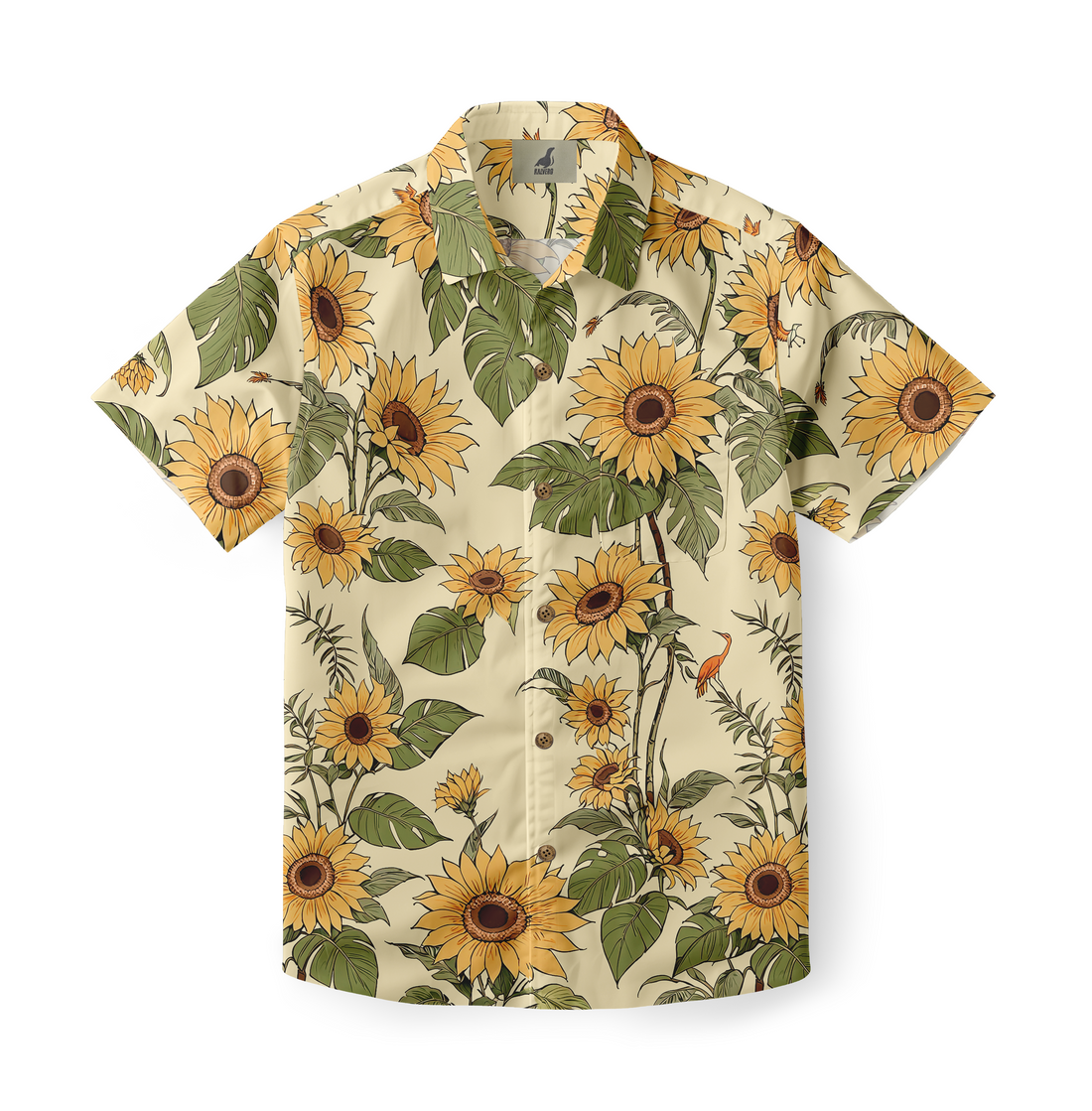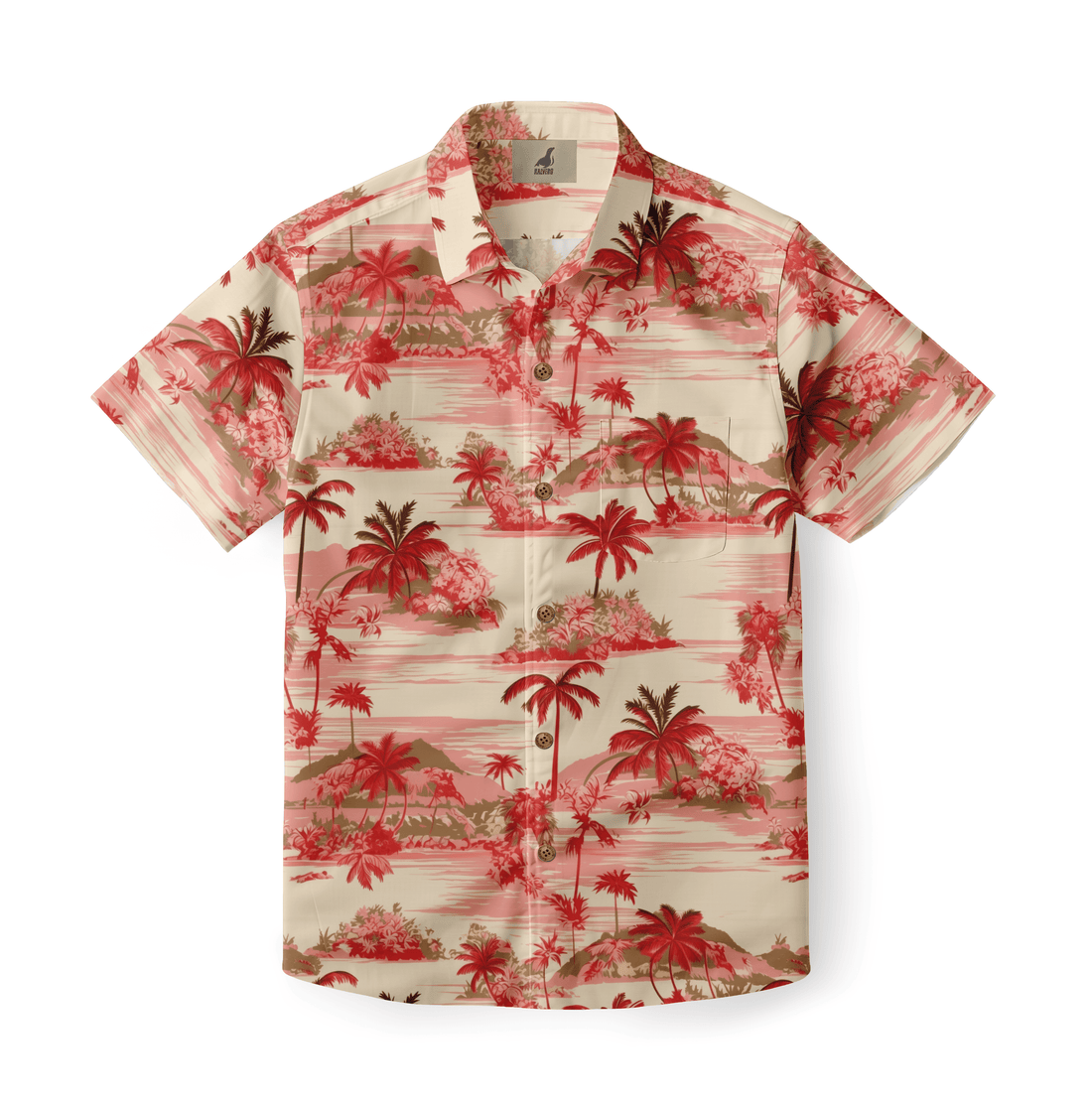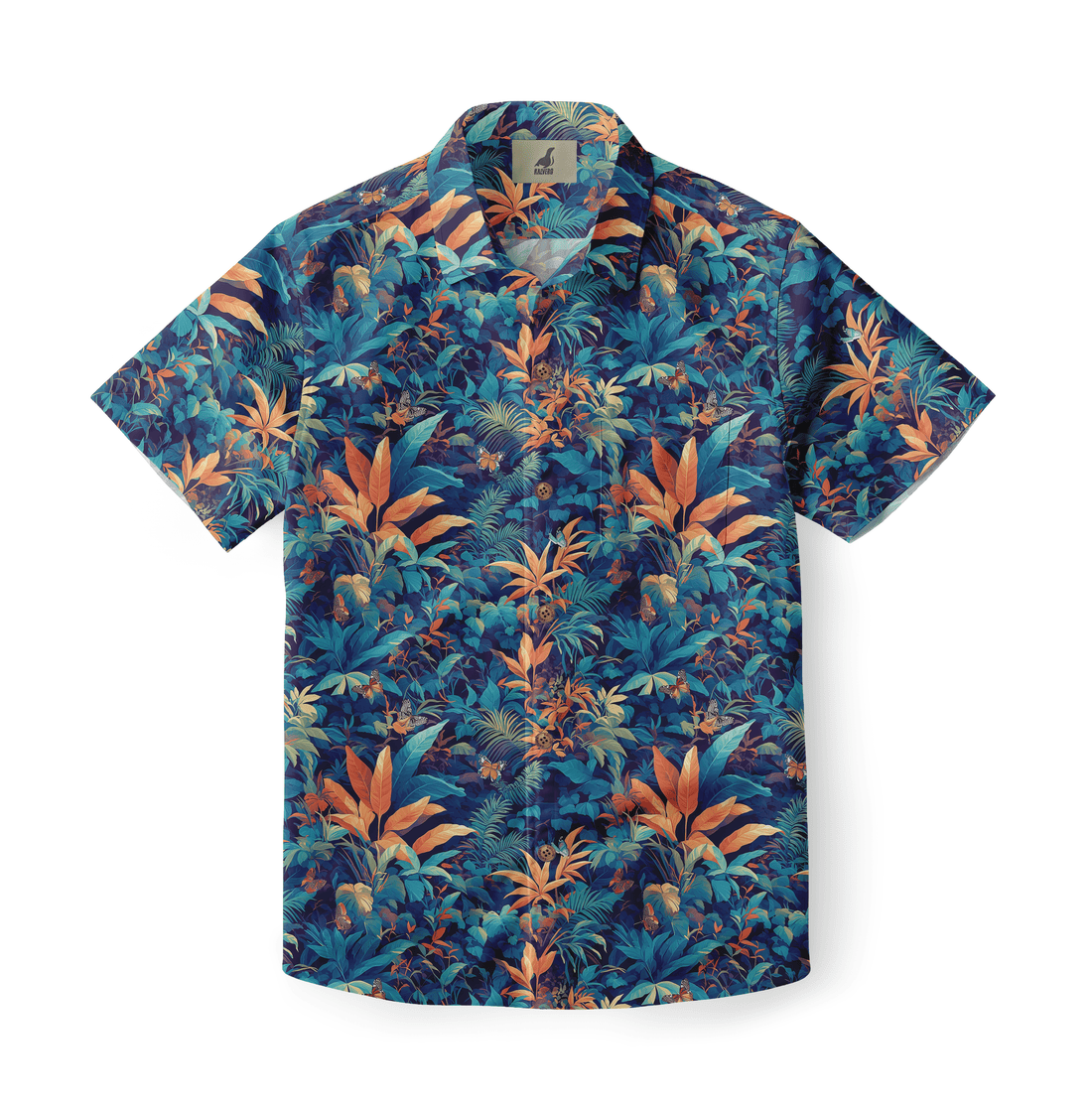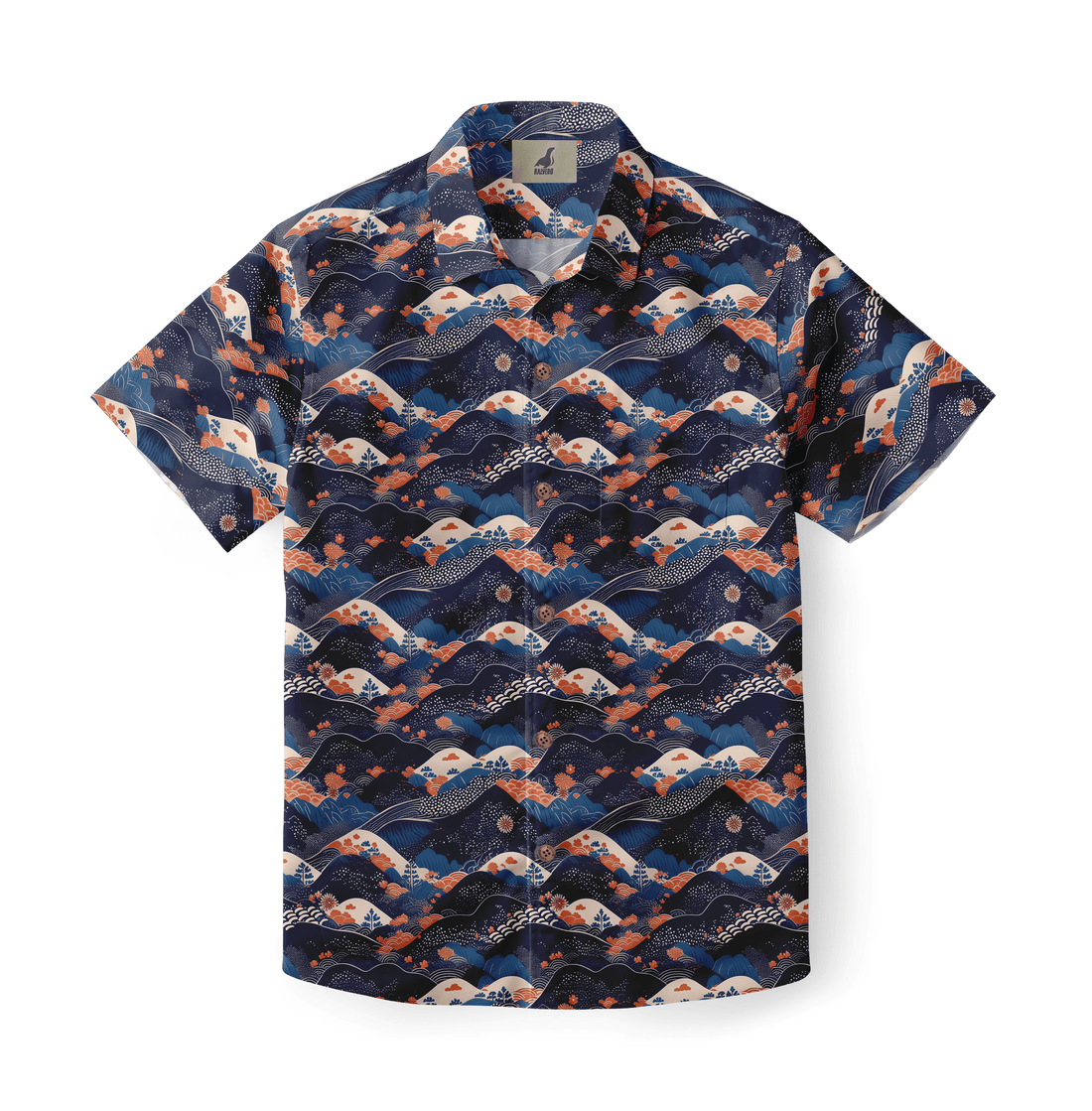Famous People Who Made Hawaiian Shirts Iconic is the guiding search phrase for collectors and trend watchers. The phrase links celebrity influence with the garment’s rise from island craft to global wardrobe staple. Historical photographs show entertainers and public figures wearing bold prints in both formal and casual settings. Their choices shaped how designers reinterpreted patterns and adjusted fits. Retail buyers read these signals and order similar styles for seasonal assortments. Photographers and stylists borrowed motifs for editorials and campaigns. Over decades, select famous wearers created enduring visual templates artists and brands kept referencing. That cultural circulation explains why island prints have such persistent mainstream presence.
Famous People Who Made Hawaiian Shirts Iconic: Hollywood and Screen Influences
Famous People Who Made Hawaiian Shirts Iconic often begins with film and television exposure. Major productions set in tropical locales asked costume departments to adapt local dress for on-screen characters. Stars who accepted those wardrobe pieces brought the shirts into popular view immediately. Audiences then associated aloha motifs with leisure, romance, and exotic settings. Costume-driven popularity encouraged manufacturers to scale patterns for wider sale. Small studios and later major fashion houses responded with ready-to-wear adaptations. The television era added repeating exposure, turning occasional sighting into ongoing trend. Consequently, screen appearances acted as catalysts that shifted the shirts from tourist novelty to aspirational apparel.
Famous People Who Made Hawaiian Shirts Iconic: Musicians and Pop Culture Ambassadors
Famous People Who Made Hawaiian Shirts Iconic also includes musicians who embraced island prints on stage. Performers used shirts to signal relaxed identities and connect with audiences visually. Some artists paired loud florals with tailored trousers for high-contrast stage styling. That approach emphasized personality and ease while keeping professional polish. Tour photographers and album art amplified the look across media channels. Fan adoptions increased as attendees copied on-stage outfits for local shows. Music-driven visibility often outlived single tours, influencing streetwear adoption and seasonal drops. In several cases, albums and televised performances cemented a particular print as culturally significant among fan communities.
Famous People Who Made Hawaiian Shirts Iconic: Designers, Brands, and Tastemakers
Famous People Who Made Hawaiian Shirts Iconic includes designers and brand founders who championed the print. Those industry figures commissioned artisan motifs and curated archival references. Brand collaborations with public figures formalized stand-alone collections tied to celebrity imagery. Retail placements in prominent stores introduced curated ranges to luxury and mass markets. Boutique makers also gained recognition when notable patrons wore their hand-printed shirts in public. Such endorsements increased perceived authenticity and justified premium pricing for limited editions. Over time, designer interventions refined silhouettes and revived traditional techniques while keeping celebrity association central to storytelling and marketing narratives.
How Celebrity Wear Changed Perception and Demand
Celebrity adoption reshaped how buyers regarded these garments across price tiers. High-profile sightings signaled acceptability for both casual and dressed-up occasions. That signal encouraged designers to create hybrid silhouettes suited for urban wear. Retail buyers then diversified assortments to include both archival-inspired prints and modern reinterpretations. Demand spikes after visible appearances often prompted fast-turn capsule production runs. Secondary markets responded with vintage hunting and resale activity. Together, these forces created feedback loops that reinforced celebrity influence. Buyers who study those cycles better predict when a print will transition from novelty into a durable category item.
Vintage Pieces and Collector Stories
Collectors prize certain shirts because of provenance and condition more than mere age. Provenance might include a known celebrity previous owner or photographic verification. Condition impacts value sharply, with intact seams and original labels commanding higher prices. Some collectors assemble thematic sets tied to a particular performer or era. Auction houses occasionally list museum-quality pieces with documented lineage, attracting international interest. Conservation practices for fragile rayon prints require specialized storage and humidity control. Community forums and collector clubs help share authentication tips and source leads. These networks add depth to the garment’s commercial story and preserve the cultural narratives that celebrities helped create.
Styling Lessons from Famous Wearers
-
Anchor a bold print with neutral bottoms for balance.
-
Layer a shirt over a simple tee for modern edge.
-
Tuck just the front for relaxed, intentional asymmetry.
-
Choose scale carefully; small repeats suit fitted silhouettes.
-
Add a single metallic or leather accessory to elevate the look.
Styling Lessons from Famous Wearers: Practical Tips
Styling notes drawn from famous wearers make the shirts useful for varied wardrobes. Anchoring prints with neutrals emphasizes the pattern without overpowering an outfit. Layering over a basic tee creates depth and suits cooler city climates. A half-tuck provides a lived-in aesthetic that photographs well in candid street imagery. Selecting smaller motif repeats on trim fits reduces visual clutter and flatters more body types. Finally, a single metallic or leather accessory adds sophistication when an elevated appearance is desired. Following these practical tips helps shoppers translate celebrity cues into wearable daily looks.
Comparative Table: Icons, Eras, and Signature Looks
| Icon | Era | Signature Shirt Detail |
| Don Ho | 1960s | Bold botanical prints, relaxed fit |
| Elvis Presley | 1970s | Occasional casual aloha shirts on tours |
| Tom Selleck | 1980s | Tailored aloha shirts on TV set |
| Bruno Mars | 2010s | Retro-inspired prints in stage wear |
Comparative Table: Icons, Eras, and Signature Looks — Reading the Table
The table links notable individuals to recognizable shirt traits and periods. Don Ho represents island-origin visibility with native performers wearing local patterns. Elvis contributed to mainstream fascination by mixing casual aloha pieces into celebrity wardrobes. Tom Selleck’s television presence framed aloha shirts for masculine leisurewear during prime-time broadcasting. Bruno Mars and similar contemporary artists revived retro scripts, adapting motifs to stage narratives. Each entry shows how public figures translated local garments for broader audiences. Understanding these connections aids collectors, stylists, and buyers when evaluating provenance and cultural context.
Ethical Considerations and Cultural Respect
Celebrity-driven trends can overshadow the shirts’ cultural origins if left unchecked. Brands and public figures have a responsibility to credit source communities. Collaborating with local artisans and offering royalties represents one ethical approach. Clear product labeling about origin and maker supports transparent consumption. Marketing that conflates authentic ceremonial garments with novelty items risks cultural harm. Public figures who wear prints on stage or in campaigns can prompt dialogue about respect and representation. When celebrities and brands engage thoughtfully, they can amplify artisans and preserve textile practices that gave rise to the shirts.
How to Shop for Iconic Hawaiian Shirts Today
Shoppers seeking pieces tied to famous wearers should verify labels and provenance. For new shirts, request maker details and fabric origins to confirm authenticity. Consider swatches and color tests for dyefastness and shrinkage. For vintage finds, inspect seams, labels, and any photographic provenance available. Boutique sellers often provide detailed descriptions and return policies that reduce risk. Auction listings sometimes include condition reports and expert notes. When buying for styling, prioritize fit and motif scale over celebrity association alone. Combining due diligence with stylistic intent yields both meaningful and practical acquisitions.
Final Takeaways on Fame and Aloha Shirts
Public figures accelerated the garment’s path from local craft to global fashion symbol. Their visible adoption created recurring cycles of demand and reinterpretation. Responsible curation by brands, collectors, and celebrities sustains cultural value and supports maker communities. Practical styling lessons from icons remain useful for modern wardrobes. Buyers who respect provenance and prioritize quality protect both aesthetic pleasure and cultural integrity. Celebrity association enhances narrative but should not replace authentic attribution. Informed choices help preserve the garment’s history while keeping it relevant and wearable for future generations.
Frequently Asked Questions
Which famous person truly started the mainstream appeal of aloha shirts?
The mainstream appeal of aloha shirts emerged from multiple sources rather than one originator. Local island makers first produced printed shirts for residents and visitors. Performers and island entertainers then wore prints in public venues, increasing visibility. Later, film and television productions set in tropical locales amplified that visibility widely. When well-known public figures adopted the shirts, demand crossed seasonal and regional boundaries. Consequently, the garment’s mainstream appeal resulted from layered commercial, cultural, and media forces working together. Researchers and textile historians emphasize the importance of viewing that history as collective, not the achievement of a single celebrity.
How can I verify that a vintage shirt belonged to a famous wearer?
Verifying provenance requires documented evidence and careful inspection. Seek contemporaneous photographs showing the individual wearing the exact pattern or label. Auction houses sometimes provide expert verification and certificates of authenticity. Physical inspection includes checking original labels, seam types, and wear patterns consistent with age. Scientific methods such as fiber analysis can estimate period authenticity when necessary. Collectors often rely on provenance chains, which trace ownership through receipts and prior sales records. When in doubt, consult a textile historian or reputable appraiser to avoid costly mistakes and ensure accurate attribution.
Are celebrity-branded aloha shirts worth collecting as investments?
Celebrity-branded aloha shirts can appreciate in value, especially when tied to documented provenance and limited production. Rarity, condition, and cultural significance influence price trajectories greatly. Items linked to high-profile events or well-documented public appearances tend to attract collector interest. However, market volatility and changing fashion tastes affect resale potential. Collectors who view purchases primarily as cultural artifacts or wearable pieces also gain enjoyment beyond financial return. For investment-focused acquisitions, prioritize authenticated pieces with strong documentation and consult auction records to understand historical price performance.








